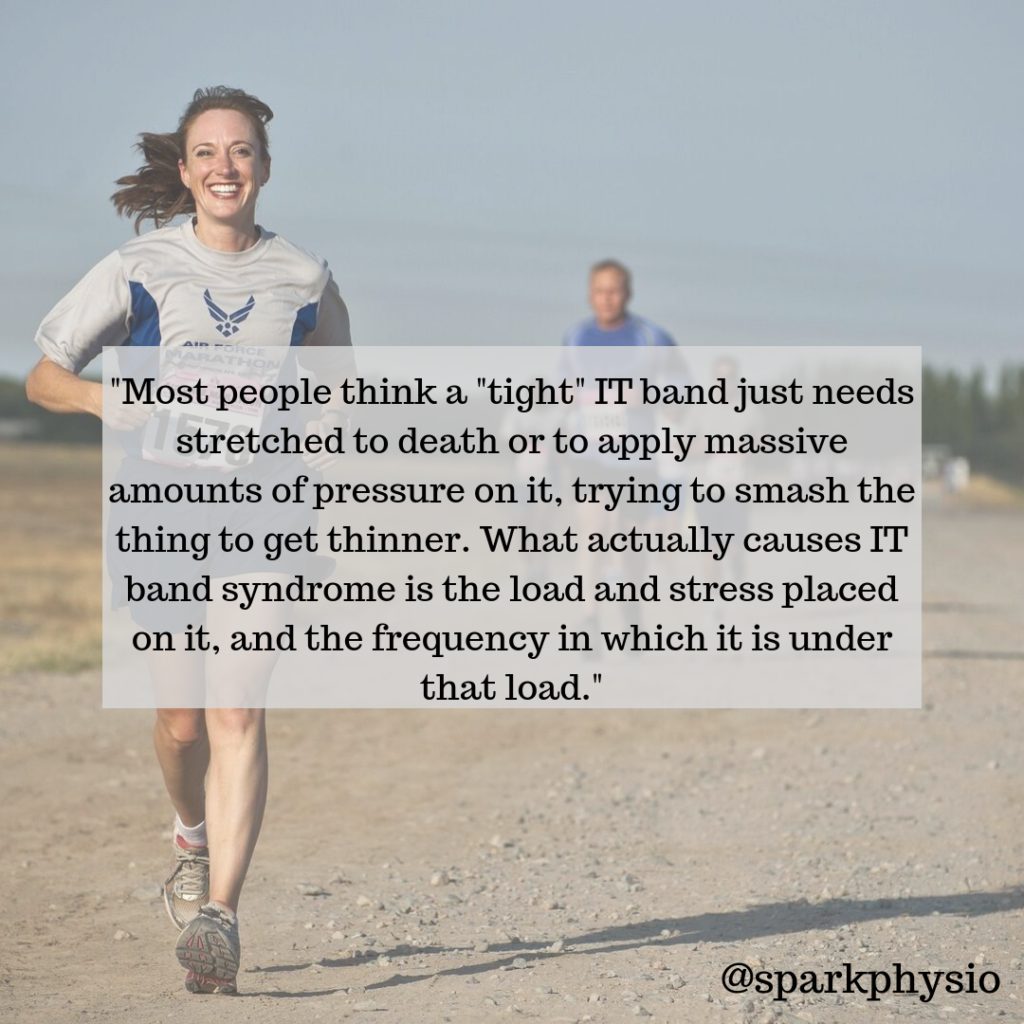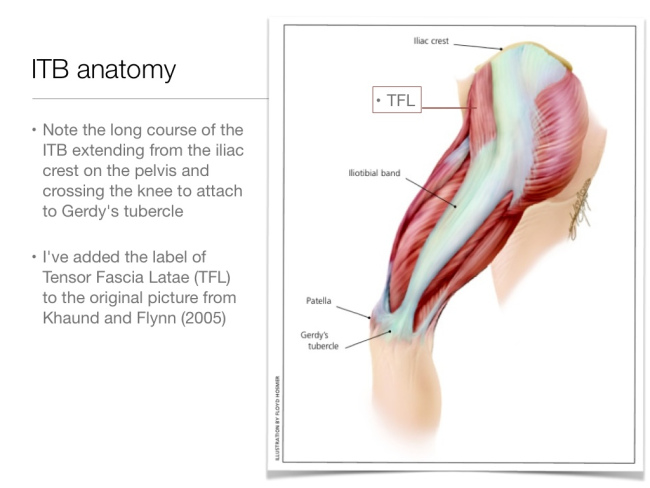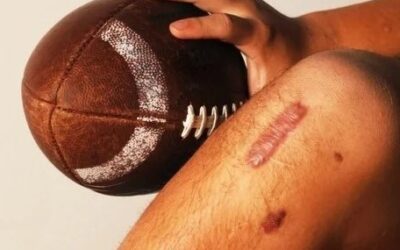
If you are a long-time runner, or you have just started to prepare for those 5K events, I’m sure you have heard of IT band syndrome (aka IT syndrome or ITBS). It is one of the most common running injuries I see.
As the weather starts to cool down here in AZ, the number of people out running in the mornings and evenings has significantly increased. This increase has also brought in an increased number of runners who have developed the dreaded IT Band Syndrome.
What Is IT Band Syndrome?
Most people know the IT band is the thick connective tissue that runs down the side of your leg. The syndrome is the pain that can come from the IT band rubbing, and causing friction, on the outside part of your femur. And, more specifically, a fat pad that sits between the IT band and the femur.

What Causes IT Band Syndrome?
Most people think it is a “tight” IT band that just needs stretched to death or to apply massive amounts of pressure on it to smash the thing to get thinner (i.e. foam rolling, massage tools, etc.). What actually causes IT band syndrome is the load and stress placed on it, and the frequency in which it is under that load. (i.e. IT band syndrome is not common in sprinters due to short spurts of running, and it is more common in long-distance runners because of the amount of time it is placed under the load and stress).
What are the common causes?:
- A significant increase in activity level. If you go from a period of rest to running multiple miles, you are making a significant change in activity level. One that your body may not be prepared for. Solution: don’t increase your mileage by more than 10% each week.
- Muscle weakness. A lot of runners lack a good strength training program because they don’t realize they need one. Strength in the glutes will help decrease the tension in the IT band. Solution: perform a strength training program targeting the glutes/legs.
- Decreased flexibility. I AM NOT TALKING IT BAND FLEXIBILITY. The IT band, in general, can not be stretched. It is flexibility of the muscles I am referring to. Solution: stretch your hip flexors to allow for better strength and utilization of your glutes.
- Decreased single-limb stability. Running is a series of single-leg jumps. You land on one leg, stand on that leg, and then push off and jump forward on one leg. It is amazing how many runners can’t even stand on one leg for >15 seconds. Solution: work on increasing single-limb balance and strength.
Best Treatment Option?
The best place to start is by seeking out a professional who works with runners and can help address any and all of the causes you may have above. Seeking specialized care with someone you know has treated this issue hundreds of times before, and was successful, is imperative to get you back to your training routine. Stop missing out on training, PR’s, and those fun events because of IT band syndrome!
If you are ready to schedule your evaluation to start getting you back to your active lifestyle, click here to fill out the form.




